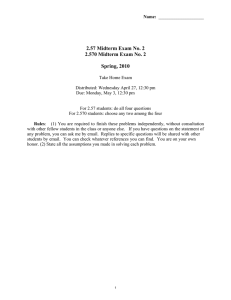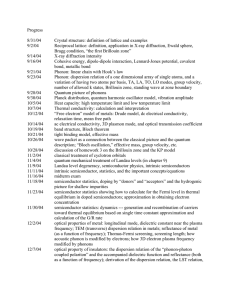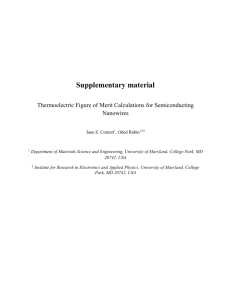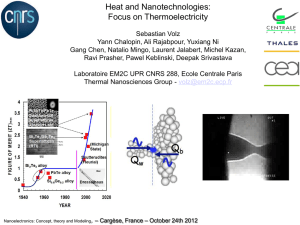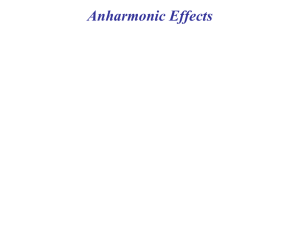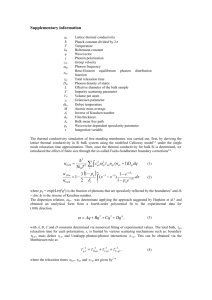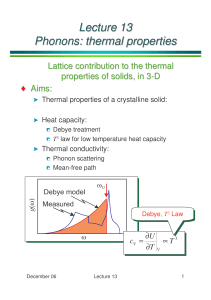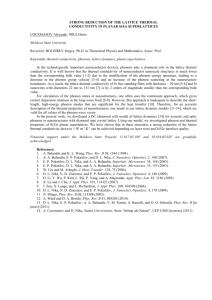Saturation of Thermal Conductivity – a
advertisement
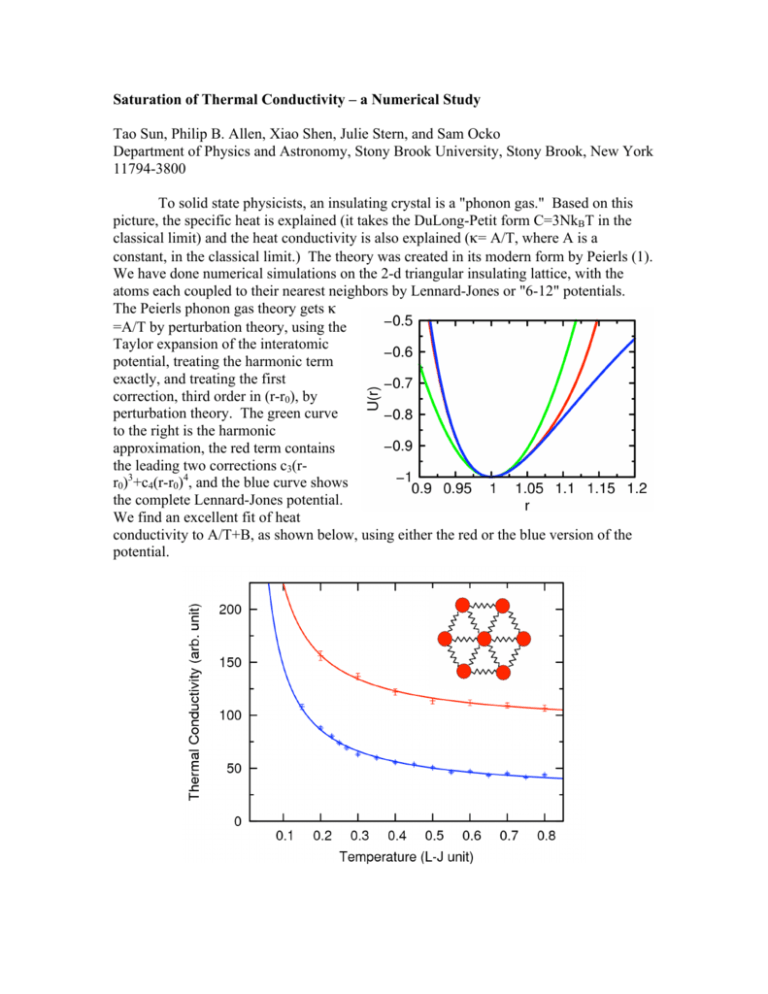
Saturation of Thermal Conductivity – a Numerical Study Tao Sun, Philip B. Allen, Xiao Shen, Julie Stern, and Sam Ocko Department of Physics and Astronomy, Stony Brook University, Stony Brook, New York 11794-3800 To solid state physicists, an insulating crystal is a "phonon gas." Based on this picture, the specific heat is explained (it takes the DuLong-Petit form C=3NkBT in the classical limit) and the heat conductivity is also explained (κ= A/T, where A is a constant, in the classical limit.) The theory was created in its modern form by Peierls (1). We have done numerical simulations on the 2-d triangular insulating lattice, with the atoms each coupled to their nearest neighbors by Lennard-Jones or "6-12" potentials. The Peierls phonon gas theory gets κ =A/T by perturbation theory, using the Taylor expansion of the interatomic potential, treating the harmonic term exactly, and treating the first correction, third order in (r-r0), by perturbation theory. The green curve to the right is the harmonic approximation, the red term contains the leading two corrections c3(rr0)3+c4(r-r0)4, and the blue curve shows the complete Lennard-Jones potential. We find an excellent fit of heat conductivity to A/T+B, as shown below, using either the red or the blue version of the potential. The “A” parameter is the same for both versions of the potential. There is a simple but wrong explanation: the two potentials share the leading correction and thus have the same predicted Peierls heat conductance. The error in this is that the problem is highly non-perturbative. Crudely, the interactions between phonons have gotten so large that the "phonon gas" has become liquid-like. The non-perturbative temperatureindependent "B" term dominates at higher temperature. What the calculations seem to say is that the non-perturbative theory leaves the low order answer unchanged and simply adds an extra constant conductance. We feel that this is a profound and surprising result. The κ =A/T+B behavior is commonly seen in experiment, as was pointed out by Slack (2). We believe that it is closely related to the “saturation” effect seen in high temperature electrical resistivity of many metals (3), which can be written (4) as 1/ρ(T)=1/(ρ1T) + 1/ρmin. The electrical case involves the breakdown of the electron quasiparticle gas picture, the electrons becoming more liquid-like when they have very short mean-free paths. However, the breakdown for electronic fermions and for vibrational bosons may differ in important ways. For example, phonons over the whole spectrum, short and long wavelengths, contribute to κ, whereas for electrons in a metal, only the short wavelength modes at the Fermi surface are relevant to the conductivity σ=1/ρ. In the electron case, the additional non-perturbative term in the electrical conductivity, 1/ρmin, seems to be approximately a universal number, e2/ a, where a is the interatomic spacing. Corresponding arguments (3) for phonons suggest B=kB2ΘD/ a, a relatively universal number. However, our computations show that B is very sensitive to higher order terms in the Taylor series for the potential, and therefore, certainly not € universal. € The present status of this project is that we have numerous interesting results, enabling us to study the breakdown of perturbation theory separately for different phonon modes (long wavelength versus short wavelength, for example.) We hope to continue this work, aiming to get a deeper insight into the modes of failure of phonon gas theory. Acknowledgements This work was supported by NSF/ITR Grant No. ATM0426757. References 1. R. E. Peierls, Ann. Physik 3, 1055 (1929). 2. G.A. Slack, The thermal conductivity of nonmetallic crystals, in: F. Seitz, D. Turnbull (Eds.), Solid State Phys., vol. 34, Academic Press, New York, 1979, pp. 1–71. 3. A. Auerbach and P. B. Allen, Universal High-Temperature Saturation in Phonon and Electron Transport, Phys. Rev. B 29, 2884-2890 (1984). 4. H. Wiesmann, M. Gurvitch, H. Lutz, B. Schwartz, M. Strongin, P.B. Allen and J.W. Halley, A Simple Model for Characterizing the Electrical Resistivity in A-15 Superconductors, Phys. Rev. Lett. 38 , 782-5 (1977).

